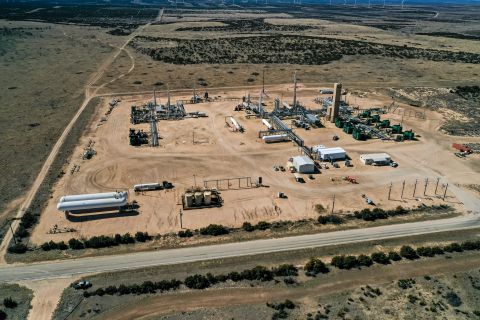
Oil prices committed to recovery in 2018 although volatility remained. As the year winds to a close, we here at Stratas Advisors felt it worthwhile to look back at the path prices have charted, and some of the key events that influenced oil markets this year. Stay tuned next year as we start our year with an overview of 2018 Themes and Risks on January 7.

Prices rose steadily through the first half of the year, and stabilized between $70/bbl to $75/bbl during the summer. Heading into fall, prices spiked on fears of undersupply in 2019 based on the U.S. resuming sanctions against Iran.
As we discussed at that time, these fears were unreasonable for several reasons. First, demand growth in 2019 will be weaker than in 2018. Second, U.S. production growth combined with OPEC increases would be able to compensate for sanctioned volumes. Finally, sanctions were unlikely to be as successful as the White House promised due to a lack of international buy-in and the likelihood that waivers would be granted at the 11th hour.
After the White House announced it was granting waivers, prices cracked, over-correcting to the downside. Prices were essentially in freefall until OPEC’s meeting Dec 6, when OPEC affirmed that it and its allies would reduce production by 1.2 million barrels per day (MMbbl/d) in 2019.
Below we outline some of the key themes and notable events of 2018.
5 Main Themes of 2018
1. Economic uncertainty and the impact on demand
The outlook for demand has been in question from the start of 2018. President Trump’s aggressive stance on trade combined with a stronger U.S. dollar and rising interest rates has put pressure on emerging market economies. Emerging market economies are expected to remain under pressure through next year, and the outlook for China is particularly challenging. However, recent months have seen movement in resolving trade disputes. Negotiations were concluded on a Canada-Mexico-U.S. trade agreement to replace NAFTA and the U.S. and China have agreed to pause any escalations in their trade dispute for 90 days to give time for negotiations to progress. While a slowdown in demand growth is still expected next year, markets are cautiously optimistic that demand could be more resilient than originally anticipated.
2. U.S. production growth
U.S. production growth has continued unabated through 2018. According to weekly EIA data, U.S. production has averaged 1.5 MMbbl/d above last year’s levels. Additionally, high prices in 2018 allowed many producers to hedge 2019 production. Strong U.S. production growth was a driving force behind price weakness in the latter half of the year as market concerns about oversupply grew.
3. Renewed focus on geopolitics
2018 was arguably the first year since 2014 that markets really paid attention to geopolitics. While sanctions against Iran are an obvious target of market interest due to their impact on supply, several other events also influenced prices, if only temporarily. In Saudi Arabia, the Crown Prince’s crackdown on elite officials temporarily supported prices. Additionally, there was considerable interest in relations with North Korea despite no immediate physical oil market impact. Geopolitical interest has waned in the latter half of the year, supplanted by concerns of future oversupply, but if markets remain in balance through 2019, geopolitics will play a more active role in pricing.
4. Future of the OPEC production alliance
OPEC’s role as a market balancer was debated throughout the year by both traders and OPEC members. Even President Trump weighed in throughout the year, issuing directives via Twitter on what OPEC and its members should do. Opinion fluctuated throughout the year as to whether OPEC was doing too much or too little to support prices. OPEC originally announced in June that it would inject more supplies into markets, and likely end the production agreement in December. However, six months later, concerns had shifted from there being too little oil to there being too much, and OPEC changed course, instead agreeing to a cut of 1.2 MMbbl/d shared between it and its allies. While some may debate OPEC’s overall efficacy, clearly it is still looked to as the main market balancing mechanism.
5. Shift from gasoline to diesel demand
In a trend that really solidified in the latter half of the year, diesel cracks appear to be driving refining margins, driven in part by an uptick in shipping demand and industrial activity in the U.S. With shippers around the world preparing for IMO 2020 regulations to come into effect, the disconnect seen between gasoline and diesel demand could continue next year. As diesel cracks have encouraged high run rates, gasoline stocks have continued to grow, helping to moderate price increases and encourage continued consumption.
Recommended Reading
Midstream M&A Adjusts After E&Ps’ Rampant Permian Consolidation
2024-10-18 - Scott Brown, CEO of the Midland Basin’s Canes Midstream, said he believes the Permian Basin still has plenty of runway for growth and development.
Post Oak-backed Quantent Closes Haynesville Deal in North Louisiana
2024-09-09 - Quantent Energy Partners’ initial Haynesville Shale acquisition comes as Post Oak Energy Capital closes an equity commitment for the E&P.
Analyst: Is Jerry Jones Making a Run to Take Comstock Private?
2024-09-20 - After buying more than 13.4 million Comstock shares in August, analysts wonder if Dallas Cowboys owner Jerry Jones might split the tackles and run downhill toward a go-private buyout of the Haynesville Shale gas producer.
Aethon, Murphy Refinance Debt as Fed Slashes Interest Rates
2024-09-20 - The E&Ps expect to issue new notes toward redeeming a combined $1.6 billion of existing debt, while the debt-pricing guide—the Fed funds rate—was cut on Sept. 18 from 5.5% to 5%.
Dividends Declared Sept.16 through Sept. 26
2024-09-27 - Here is a compilation of dividends declared from select upstream, midstream and service and supply companies.
Comments
Add new comment
This conversation is moderated according to Hart Energy community rules. Please read the rules before joining the discussion. If you’re experiencing any technical problems, please contact our customer care team.






